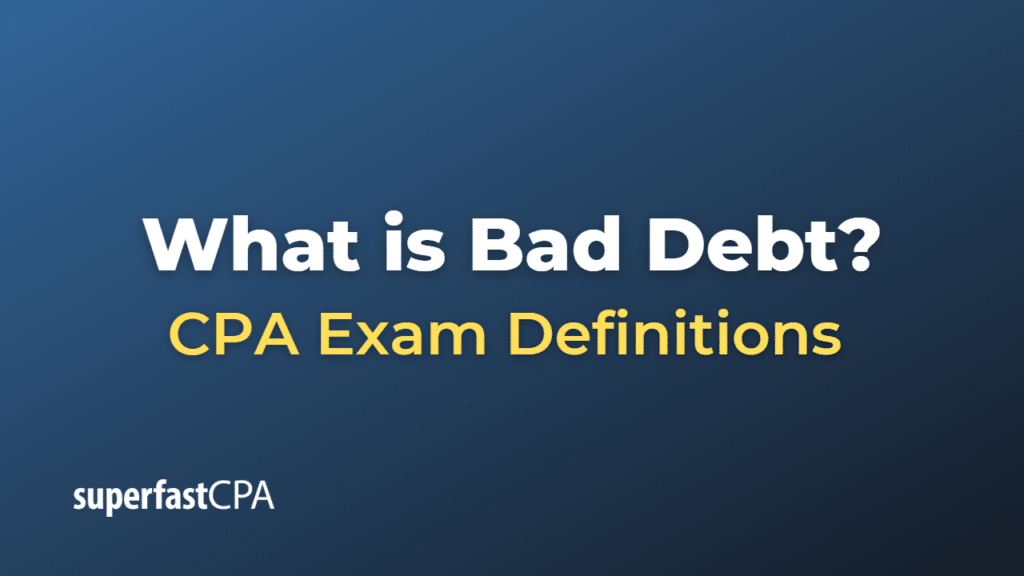Bad Debt
Bad debt refers to amounts owed to a business that are considered uncollectible, typically resulting from customers who fail to make payments for goods or services provided on credit. In accounting, bad debt is considered an expense since the business is unlikely to recover the money owed, and it is necessary to write off the uncollectible amount from the accounts receivable.
There are two primary methods of accounting for bad debt:
- Direct Write-Off Method: When it becomes clear that a specific customer’s debt is uncollectible, the business writes off the amount directly as a bad debt expense. This method is straightforward but does not always comply with the matching principle of accounting.
- Allowance Method: This method involves estimating the amount of bad debt expense for a specific accounting period and creating an allowance for doubtful accounts. The estimate is usually based on historical data or industry trends. This method adheres to the matching principle since it recognizes bad debt expenses in the same period as the related credit sales.
It is crucial for businesses to monitor their accounts receivable and take appropriate measures to minimize the risk of bad debt, such as implementing stricter credit policies or requiring customers to provide collateral for large credit transactions.
Example of Bad Debt
let’s consider a simple example of bad debt:
Suppose a company called XYZ Electronics sells products on credit to various customers. They sold a $5,000 computer system to a customer, John, on credit with payment terms of net 30 days (meaning payment is due within 30 days of the invoice date).
After 60 days, XYZ Electronics has not received any payment from John, and they have made multiple attempts to contact him without success. Based on the company’s prior experience, they determine that it is highly unlikely they will receive payment for the sale.
Using the direct write-off method, XYZ Electronics would record the bad debt expense as follows:
Debit: Bad Debt Expense (Income Statement) $5,000
Credit: Accounts Receivable – John (Balance Sheet) $5,000
By recording this journal entry, XYZ Electronics recognizes the bad debt expense on their income statement, and the accounts receivable balance for John is reduced to zero on their balance sheet.
Alternatively, if XYZ Electronics uses the allowance method, they would estimate bad debts based on their historical experience or industry trends. For example, if they estimate that 2% of their credit sales will become uncollectible, and their total credit sales for the period are $200,000, they would record a bad debt expense of $4,000 (2% x $200,000) and create an allowance for doubtful accounts:
Debit: Bad Debt Expense (Income Statement) $4,000
Credit: Allowance for Doubtful Accounts (Balance Sheet) $4,000
In this case, the actual bad debt related to John’s transaction would be applied against the allowance for doubtful accounts when it is determined to be uncollectible.













